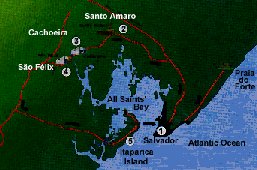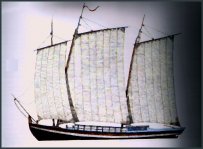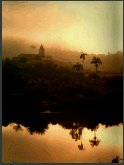Bahia's Recôncavo
The fertile region embracing All Saints' Bay is called the Recôncavo.
Historically an agricultural area -- in contrast with Salvador, whose economy
was based on commerce -- the bay region has its own personality and unique
way of being.
For centuries, the region's rich, dark soil, and the sweat and toil of African slaves and their descendants, made the region a place of opulent wealth. It had closer ties to Europe, Africa and India than the rest of Brazil. Ships arrived from ports scattered throughout the vast Portuguese empire, putting aboard the Recôncavo's sugar and tobacco and disembarking slaves, merchandise and gold. Saveiros, small sailboats characteristic of the region, plied the rivers carrying goods from the plantations to the docks and markets.
Plantation owners ruled their dominions like feudal barons and imitated the lifestyles of the European courts. A few even married their daughters to Portuguese nobles. Some families prospered. Others were ruined by extravagance. The crash of sugar prices in the 19th century virtually depopulated the Recôncavo. Many fled to the capital and other parts of Brazil in search of work and a new life. As a result, many of the region's towns have stood still in time, quiet, serene, and virtually untouched by the steel, smoke and asphalt of progress.
Although the region has preserved its historic roots, it is far from dormant. The placid beauty of its towns and the vibrant blend of European and African traditions attract tourists from all over the world. One of the most popular results of this cultural fusion is the Boa Morte Sisterhood's festival, held in August in the city of Cachoeira.
Find out more about the Recôncavo


